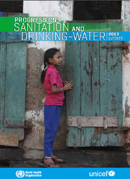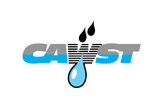USAID and Dispensers for Safe Water Announce $5.5 million Partnership
by Alexandra Fielden
Women in the remote village of Markuny in Kenya are taking the lead and treating their families’ drinking water. This was not always the case; Markuny used to be one of the many places in the world where waterborne diseases are commonplace. Globally, diarrheal disease is the second leading cause of death in children under five.
To address the global challenge of sickness from cholera, diarrhea and typhoid, Innovations for Poverty Action developed the chlorine dispenser system – a low-cost technology proven to dramatically increase rates of household water treatment, decreasing the burden of waterborne disease. Today, USAID’s Administrator, Rajiv Shah, announced an award from USAID’s Development Innovation Ventures (DIV) to support the scale-up of the Dispensers for Safe Water program. The $5.5 million grant, supported by DIV’s WASH for Life partnership with the Bill and Melinda Gates Foundation, is DIV’s first Stage 3 award. Stage 3 funding is reserved for innovative solutions that have credible and rigorous evidence of development impacts at significant scale. Stage 3 projects transition an innovation from large scale implementation to widespread adoption; this grant will help Dispensers for Safe Water provide five million people with access to dispensers. 
Chlorine dispensers are installed next to communal water sources, and supported by community education activities to encourage use, and a consistent supply of chlorine. To treat their water, community members simply turn the valve to release a metered dose of chlorine, then fill their container as they normally would with water from the source. The chlorine disinfects the water and provides ongoing protection from recontamination for up to 72 hours.
The dispenser allows community members to conveniently and easily treat their water, and its physical presence provides a visual reminder to do so. A randomized trial in Western Kenya found 50 – 61% of households in the treatment group adopted the water treatment, compared with only 6 – 14% in the control group. Impressively, the program has been able to maintain high usage, seeing 43% adoption rates at scale.
Director of Programs for Dispensers for Safe Water, Eric Kouskalis, said “we are thrilled to be partnering with DIV on the scale-up of dispensers. DIV’s objective is to find, test, and scale interventions that get the biggest bang for the buck, and at a cost of less than $0.50 per person per year at scale, dispensers fit the bill perfectly.”
Dispensers for Safe Water critically evaluates the program to drive improvements throughout the expansion. DIV and Dispensers for Safe Water will measure success along metrics such as the number of dispenser users (by gender), the percentage of households with chlorine present in their drinking water, the percentage of individuals who understand the benefits and correct usage of dispensers, and the dispenser manufacturing and chlorine delivery costs. This data will provide valuable feedback to help the program maximize adoption, sustain dispenser usage, and increase operational efficiencies.
Maura O’Neill, Chief Innovation Officer at DIV, congratulated DSW on the award. “Results based on rigorous evidence is the hallmark of DIV. Through this award with Dispensers for Safe Water, we will avert 3.3 million cases of diarrhea, save 3,200 children’s lives and that is just in the first three years.”
- Read the evidence: http://www.poverty-action.org/safewater/impact
- Watch a video of how chlorine dispensers work: http://www.poverty-action.org/safewater
- Apply for DIV funding:http://www.usaid.gov/div/apply






